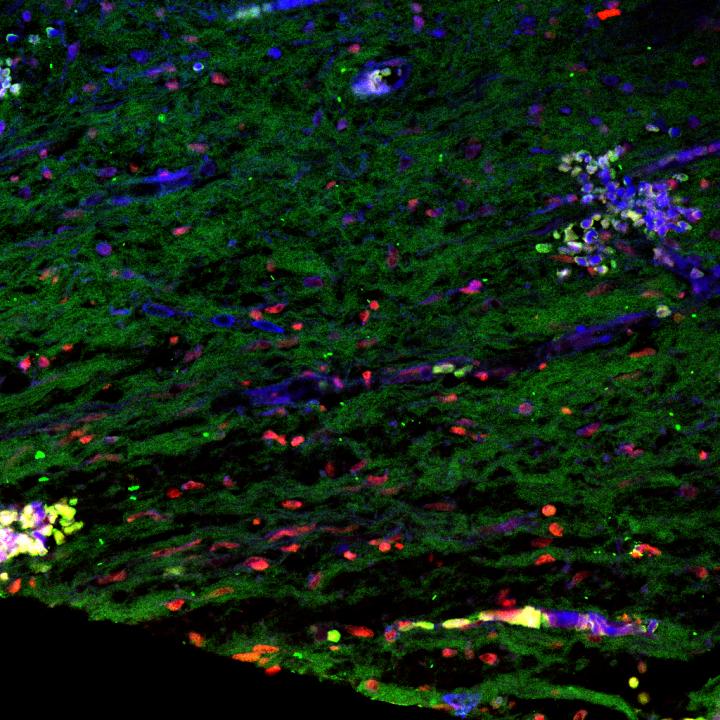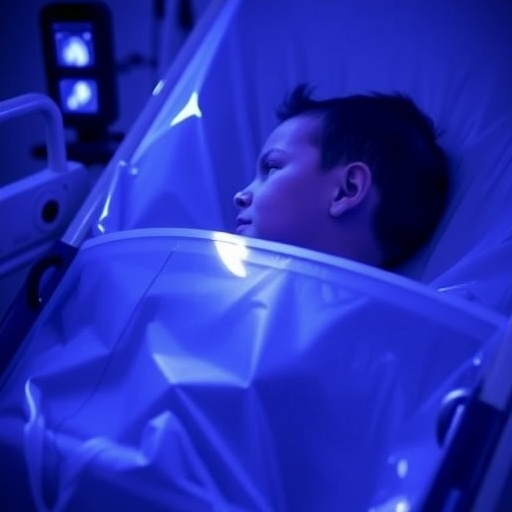
Credit: Courtesy of University of Pennsylvania
Sometimes kids trip and fall, and their teeth take the hit. Nearly half of children suffer some injury to a tooth during childhood. When that trauma affects an immature permanent tooth, it can hinder blood supply and root development, resulting in what is essentially a "dead" tooth.
Until now, the standard of care has entailed a procedure called apexification that encourages further root development, but it does not replace the lost tissue from the injury and, even in a best-case scenario, causes root development to proceed abnormally.
New results of a clinical trial, jointly led by Songtao Shi of the University of Pennsylvania and Yan Jin, Kun Xuan, and Bei Li of the Fourth Military Medicine University in Xi'an, China, suggest that there is a more promising path for children with these types of injuries: Using stem cells extracted from the patient's baby teeth. The work was published in the journal Science Translational Medicine.
"This treatment gives patients sensation back in their teeth. If you give them a warm or cold stimulation, they can feel it; they have living teeth again," says Shi, professor and chair in the Department of Anatomy and Cell Biology in Penn's School of Dental Medicine. "So far we have follow-up data for two, two and a half, even three years and have shown it's a safe and effective therapy."
Shi has been working for a decade to test the possibilities of dental stem cells after discovering them in his daughter's baby tooth. He and colleagues have learned more about how these dental stem cells, officially called human deciduous pulp stem cells (hDPSC), work and how they could be safely employed to regrow dental tissue, known as pulp.
The Phase I trial, conducted in China, which has a research track for clinical trials, enrolled 40 children who had each injured one of their permanent incisors and still had baby teeth. Thirty were assigned to hDPSC treatment and 10 to the control treatment, apexification.
Those that received hDPSC treatment had tissue extracted from a healthy baby tooth. The stem cells from this pulp were allowed to reproduce in a laboratory culture, and the resulting cells were implanted into the injured tooth.
Upon follow-up, the researchers found that patients who received hDPSCs had more signs than the control group of healthy root development and thicker dentin, the hard part of a tooth beneath the enamel. Blood flow increased as well.
At the time the patients were initially seen, all had little sensation in the tissue of their injured teeth. A year following the procedure, only those who received hDPSCs had regained some sensation. Examining a variety of immune-system components, the team found no evidence of safety concerns.
As further support of the treatment's efficacy, the researchers had the opportunity to directly examine the tissue of a treated tooth when the patient reinjured it and had to have it extracted. They found that the implanted stem cells regenerated different components of dental pulp, including the cells that produce dentin, connective tissue, and blood vessels.
"For me the results are very exciting," Shi says. "To see something we discovered take a step forward to potentially become a routine therapy in the clinic is gratifying."
It is, however, just a first step. While using a patient's own stem cells reduces the chances of immune rejection, it's not possible in adult patients who have lost all of their baby teeth. Shi and colleagues are beginning to test the use of allogenic stem cells, or cells donated from another person, to regenerate dental tissue in adults. They are also hoping to secure FDA approval to conduct clinical trials using hDPSCs in the United States.
Eventually, they see even broader applications of hDPSCs for treating systemic disease, such as lupus, which Shi has worked on before.
"We're really eager to see what we can do in the dental field," Shi says, "and then building on that to open up channels for systemic disease therapy."
###
The research was supported by the National Key Research and Development Program of China, the Natural Science Foundation of China and a pilot grant from Penn Dental Medicine.
Media Contact
Katherine Unger Baillie
[email protected]
215-898-9194
@Penn
http://www.upenn.edu/pennnews
Original Source
https://penntoday.upenn.edu/news/regrowing-dental-tissue-stem-cells-baby-teeth http://dx.doi.org/10.1126/scitranslmed.aaf3227





